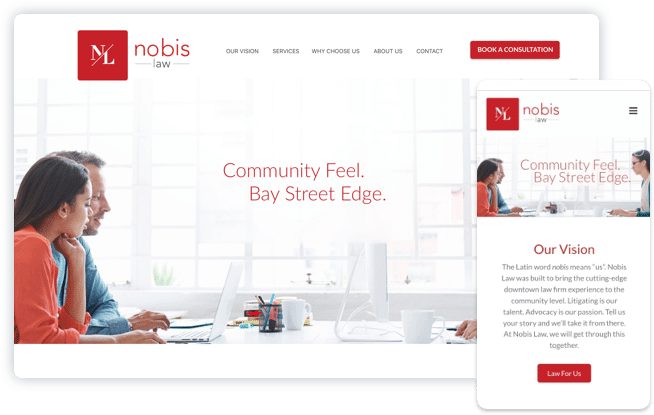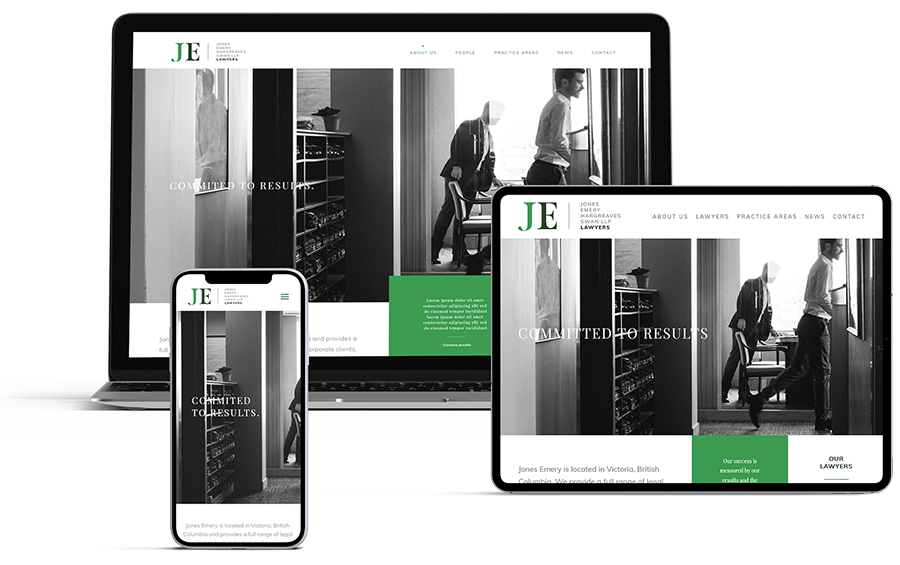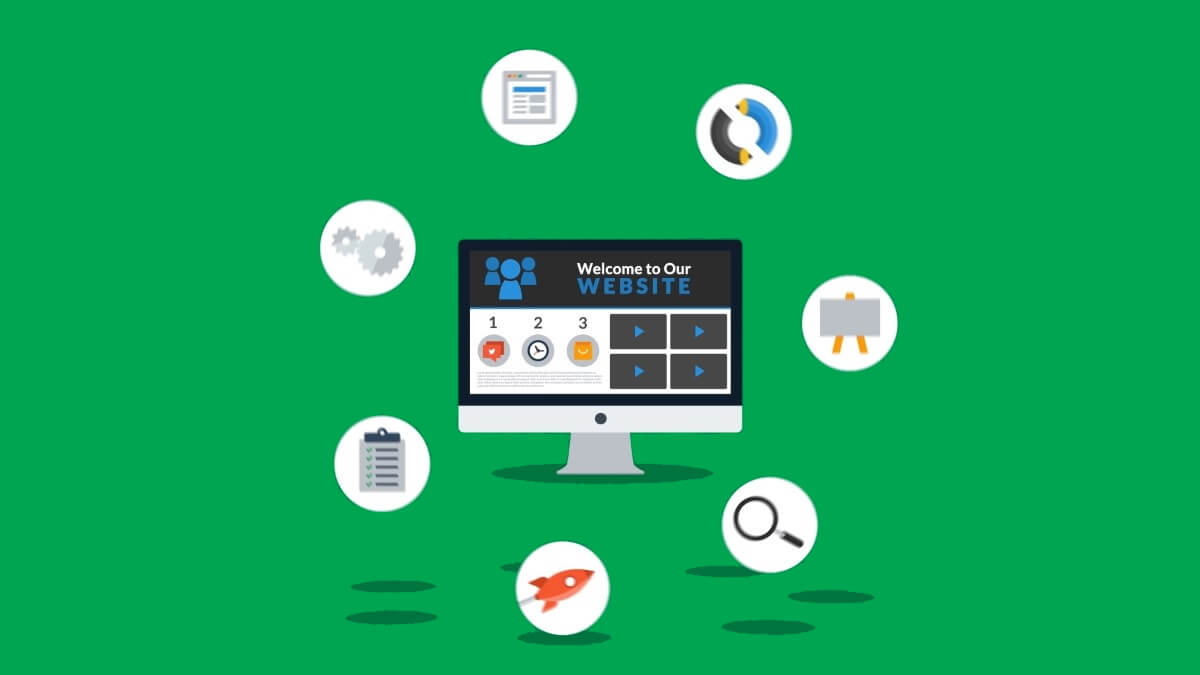Attain Online Quality: Companion with an Acclaimed Web Design Agency
Attain Online Quality: Companion with an Acclaimed Web Design Agency
Blog Article
Explore the Various Types of Website Design Solutions for Your Unique Needs
From receptive internet design that adjusts to various devices, to ecommerce internet design that drives on the internet sales, to customer experience (UX) design that improves client satisfaction, to custom-made internet design that brings your vision to life-- the possibilities are limitless. Whether you're a tiny business owner looking to establish an on-line visibility or an entrepreneur aiming to reinvent the mobile application globe, this discussion will shed light on the different types of internet layout solutions available, helping you make an educated decision that lines up with your objectives.
Receptive Internet Layout
Receptive website design is an important element of modern-day internet growth that makes certain internet sites adapt and display perfectly across different devices and screen sizes. With the increasing use smartphones, tablets, and other mobile phones, it has become important for sites to be available and easy to use on any screen.
Receptive website design utilizes a combination of flexible grids, layouts, photos, and CSS media queries to accomplish this versatility. It allows the website to instantly readjust its design and content based on the tool's display dimension, resolution, and positioning (website design company). This implies that users can access the internet site on their desktop computer computer systems, laptop computers, tablet computers, or mobile phones without coming across any issues or having to zoom in or bent on watch the content properly

Shopping Website Design

With the increasing demand for on-line shopping, companies are currently concentrating on e-commerce web layout to develop aesthetically enticing and user-friendly sites that drive sales and improve the consumer purchasing experience. E-commerce web design includes different facets such as format, navigating, item display, and checkout process optimization. These aspects are vital for bring in and preserving consumers, as well as increasing conversion rates.
An effective e-commerce website design starts with a well-organized layout that allows users to easily find the solutions or items they are seeking. Instinctive and clear navigating food selections, search bars, and filtering system choices are necessary for a smooth browsing experience. Additionally, the product display screen need to display top notch pictures, in-depth descriptions, and customer testimonials to construct depend on and confidence in the product.
Furthermore, the check out procedure ought to be optimized for simpleness and comfort. A secure and structured repayment gateway, in addition to several payment alternatives, makes sure a smooth deal for the customer. In addition, integrating features such as visitor checkout, order monitoring, and individualized recommendations can boost the general shopping experience.
Individual Experience (UX) Design
Individual Experience (UX) Design plays an essential role in developing appealing and easy to use web sites that prioritize the demands and choices of the target audience. When interacting with a web site or app, it entails developing and improving the general experience that users have. UX developers aim to boost individual complete satisfaction by improving the functionality, accessibility, and performance of the site.

UX designers focus on developing instinctive navigation, succinct and clear web content, and aesthetically appealing interfaces. They guarantee that the internet site is very easy to navigate and understand, making certain a smooth and enjoyable individual experience.
Along with boosting use, UX layout also considers the emotional aspect of user experience. Designers aim to evoke positive emotions through visual elements, such as shades, typography, and images, which add to the total customer contentment.
Custom Internet Layout
Personalized internet layout entails developing custom-made and distinct sites that are particularly developed to meet the individual demands and needs of a service or company. Unlike pre-designed design templates or generic website layouts, personalized website design offers a tailored strategy that shows Resources the brand identification, worths, and goals of the client.
With personalized website design, every aspect of the internet site is very carefully crafted to align with the customer's goals. This includes the format, shade scheme, typography, photos, and general user experience. The layout process starts with a complete understanding of the client's business and target market, allowing the internet designer to create a web site that effectively connects the client's message and involves users.
Among the essential benefits of customized internet style is its flexibility. As the internet site is developed from the ground up, the web developer has total control over its capability and features. This makes it possible for the integration of any kind of desired personalizations, such as e-commerce performance, web content management systems, or interactive aspects.
Additionally, customized website design makes sure that the internet site is enhanced for internet search engine, making it more visible to possible customers. By executing search engine optimization ideal practices, such as appropriate keyword positioning and meta tags, the website can achieve higher positions in internet search engine results.
Mobile App Style
Mobile application layout involves creating easy to use and aesthetically enticing interfaces for applications that are especially created for mobile tools. With the increasing appeal of smartphones and tablets, mobile application design has become an important element of electronic item growth.

Visual allure is additionally crucial in mobile app design. Using shades, typography, and imagery can develop an aesthetically pleasing interface that captures the customer's interest and enhances their total experience. Furthermore, integrating brand name aspects and maintaining uniformity with the company's visual identification can assist develop a solid brand visibility you can try this out within the app.
Mobile application style also entails thinking about numerous technological aspects, such as gadget responsiveness, efficiency, and compatibility optimization - website design agency. It is important to ensure that the application operates effortlessly throughout different tools and operating systems, giving a consistent experience to all customers
Conclusion
Receptive internet layout makes certain a smooth experience throughout various gadgets, while ecommerce internet style focuses on producing on-line purchasing systems. Personalized internet layout uses customized options to satisfy particular requirements, while mobile app layout concentrates on developing easy to use mobile applications.
From receptive web style that adapts to different tools, to ecommerce internet layout that drives on-line sales, to individual experience (UX) redirected here design that enhances consumer fulfillment, to customized internet layout that brings your vision to life-- the opportunities are limitless.An efficient ecommerce web style starts with a well-organized layout that allows customers to conveniently discover the products or solutions they are looking for. The layout process starts with a detailed understanding of the customer's company and target audience, permitting the internet designer to create a web site that efficiently connects the client's message and involves individuals.
Responsive internet design makes certain a seamless experience throughout different tools, while ecommerce internet style concentrates on developing on the internet shopping systems. Custom-made internet style supplies tailored solutions to satisfy specific demands, while mobile application style concentrates on creating straightforward mobile applications.
Report this page